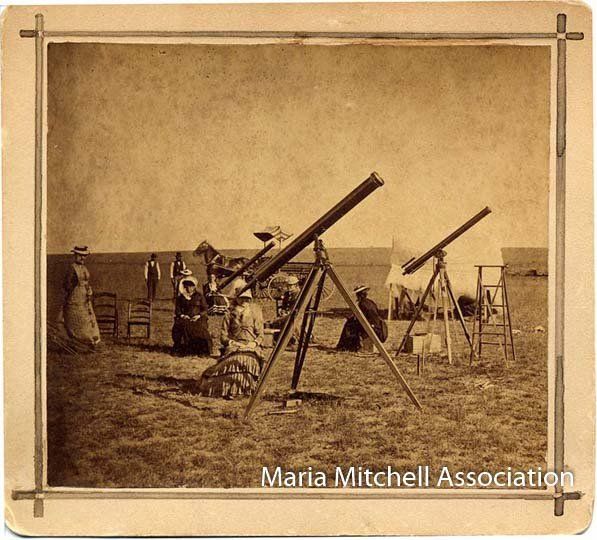American Eclipse
Yes, it is coming. August 21 st to be exact. Mark your calendar as the MMA will be hosting activities during the days before it and on the day as well. While we will not see a total solar eclipse, we will get a partial view – about 75% of the Sun will be “bitten” or covered in shadow.
There is of course much press surrounding this event. And, in June, David Baron’s book, American Eclipse , was released. This was something that was in the works for quite a few years – he first contacted me probably about five years ago concerning Maria Mitchell’s papers. It was great to see the final result after numerous contacts with David, questions, discussions, etc. Maria Mitchell viewed three solar eclipses in her life – the first being right here from 1 Vestal Street in 1831 when she was 12 ½ years old. She counted seconds for her father, William, which then allowed them to determine the exact longitude of the Mitchell House – 70.105 longitude. (The latitude is 41.281.)
David has already been interviewed on NPR (see our MMA Facebook page) and is making his book tour rounds – I am hoping he will come out to us next summer to celebrate Maria Mitchell’s 200th Birthday – Dava Sobel has said she would join us. Smithsonian Magazine also did an interview with David in the column “Small Talk” in its most recent issue. And thankfully, David corrected them on their maybe not entirely correct ideas about Maria and her influence on women in the sciences.
I am in the midst of reading the book. Maria Mitchell is one of about four astronomers who are featured so she plays a large role in his discussion of the eclipse of 1878. Maria travelled to Colorado to view the eclipse with her students – making a rather serous sensation – you know, all those ladies traveling out to the wild West by themselves with no men to protect them and traveling in open wagons and trains. Such horrors! (Well, at least that would have been the opinion in that period.)
So, to celebrate Maria – and of course the eclipse – check out American Eclipse .
JNLF
Recent Posts





